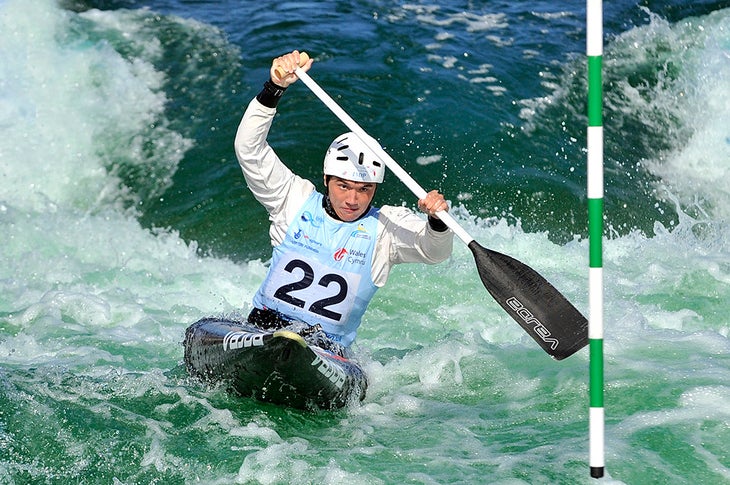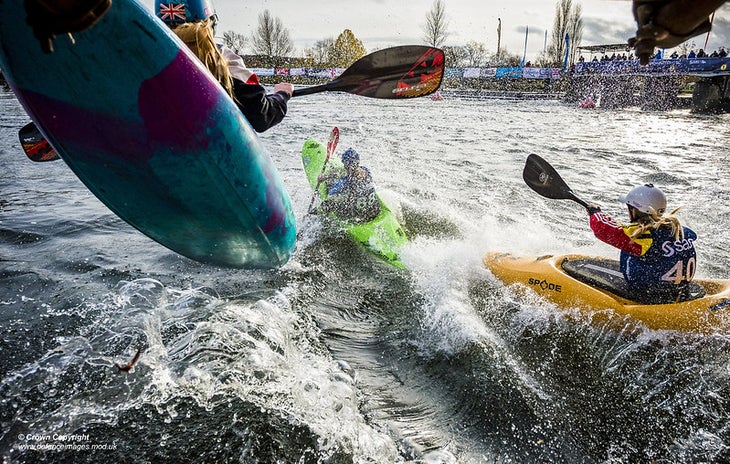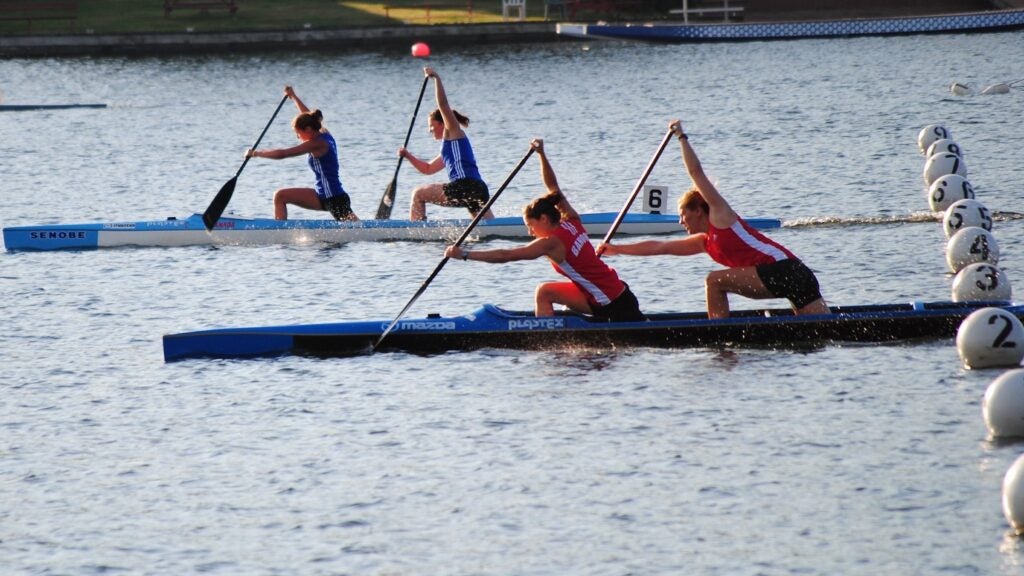No products in the cart.
Outdoor Adventure
Olympic Canoeing is Wild. Here’s How to Watch.
Don’t miss a moment of the 2024 Tour de France! Get recaps, insights, and exclusive takes with Velo’s daily newsletter.
Sign up today!.
Rippling muscles, knife-blade boats, and carbon-fiber everything. Giant athletes with lats so big they dwarf the vessels they’re kneeling—yes, kneeling—on top of. Arms rotating so fast they look like helicopter blades. Races that are over in the blink of an eye. Welcome to the wild and wonderful world of Olympic canoeing.
The first time I heard of Olympic canoeing, I laughed out loud. I had no idea it even existed as a competitive sport—let alone an Olympic one. I myself have done my fair share of paddling—albeit with mixed results. My image of the sport has always been a slow-paced, bucolic sort of travel. I thought it was reserved for retirees with birding binoculars, explorers on the Boundary Waters, or kids in puffy orange life jackets eating bugs out of each other’s hair on sluggish Georgia creeks. In my mind, that’s all canoeing could ever be—until I saw these space-age, carbon-fiber boats charging across the finish line this weekend. Wow, I thought. This looks nothing like what I did in summer camp.
For starters, the boats look much cooler. They’re carbon-fiber toothpicks painted in racing stripes. There are two main types of boats: open-topped numbers that look pretty similar to the traditional summer camp version, and closed-topped kayaks. The techniques the athletes use to move these boats are equally fascinating. Here are some of the more surprising disciplines.
Canoe Slalom
AKA Obstacle-Course Racing in a Canoe

The races I watched this weekend were “slalom canoe.” Slalom is basically an obstacle course. In it, athletes grip a single-bladed paddle and dart through a man-made coarse riddled with rapids, tiny waterfalls, and gated checkpoints. The women’s K-1 (“one-person kayak”) slalom final was on Sunday, and the men’s C-1 (“one-person canoe”) was Monday. Australia took gold for the women’s K-1, and France won the men’s C-1. There will be more canoe slalom races throughout the week if you want to experience my awe for yourself.
Kayak Cross
AKA Full-Contact Paddle-Fighting

Early next month, things will get even weirder. Come August, kayak cross makes its debut. This is a multi-person obstacle race where full contact is allowed. Athletes are allowed to push each other and try to flip each other’s boats. If you flip, you’re required to do a 360-degree underwater roll to right yourself. Things often get pretty physical. The Paris Olympics is the first time kayak cross has ever appeared in the Olympics, so there will be a lot of eyes on this one.
Canoe Sprint
AKA All-Out Speed (With the Occasional Portage)

In summer camp, I was taught to keep my butt on the seat of the canoe at all times. These folks were apparently taught otherwise. In the canoe sprint events, which begin August 6, athletes take a knee in the floor of the canoe and lunge forward to get maximum reach. The paddles are carbon-fiber, but aside from that, they resemble the single-bladed paddles you probably used to tool around your grandpa’s pond as a kid. Athletes use a short, quick stroke, which I find remarkably ungraceful. There’s nothing quite like watching a grown man hack at the water as hard as he can with what looks like a very expensive pizza peal. Even better is the C-2 sprint, which involves double the athletes—and therefore double the chaos.
Adding to the intrigue: The boats, which are also made of carbon fiber, are extremely shallow to maximize speed—which means they can get pretty squirrelly. If you’re looking to watch a professional athlete capsize himself into a river on TV, this is your time. In past World Championship events, race organizers have even surprised athletes with portages—sections where athletes are required to exit the water and run with their canoe to the next put-in. Portaging is a time-honored necessity of canoe camping as well as canoe marathon, another competitive paddling event, but isn’t typical for canoe sprint. As such, it probably won’t appear in the Olympics (though we can still hope).
Where to Watch Canoeing in the Paris Olympics
Olympic canoeing is something of an undiscovered sport, but the power and technical talent of the athletes is hard to ignore. If you’re hoping to get in on the action, you’ll need to tune in via NBCUniversal. If you have cable, you should be able to find the events on NBC, CNBC, or USA Network. If you’re looking for a streaming option, you’ll need to purchase a Peacock subscription ($7.99 per month).
Source link

